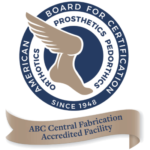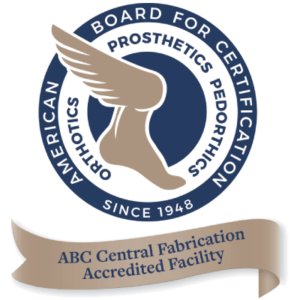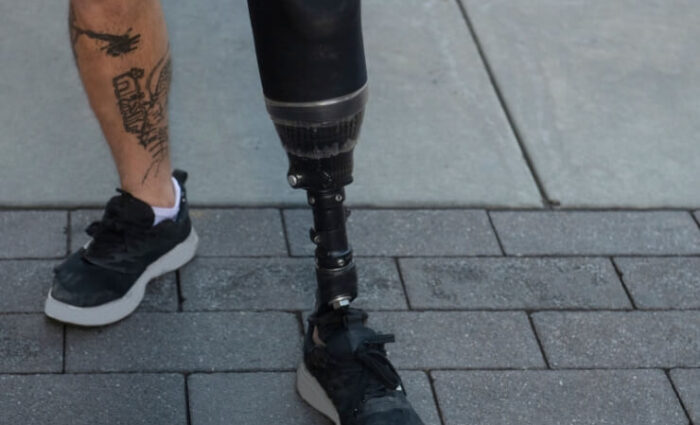Crafting Custom Prosthetic Sockets: A Detailed Process
The world of prosthetic fabrication is a blend of science and art, where skilled prosthetists craft custom prosthetic sockets to provide individuals with limb loss with a tailored and functional solution. At the heart of this process is the meticulous creation of a prosthetic socket, the crucial component that connects the residual limb to the prosthetic device.
In this guide, we will explore each step of the fascinating journey involved in making custom prosthetic sockets, from the initial stages of mold creation to the final adjustments that ensure a perfect fit.
Create a Mold Out of Foam or Plaster
The foundation of prosthetic socket fabrication lies in the creation of an accurate mold that captures the unique contours of the patient’s residual limb. Prosthetists carefully consider factors such as the shape and size of the limb, opting for materials like foam or plaster for the mold.
A plaster cast is often the preferred choice due to its malleability and ability to capture fine details. This initial positive mold serves as the starting point for the subsequent stages of the prosthetic socket design process. It is a crucial step that requires both technical expertise and an understanding of the patient’s anatomy.
Use a Thermoplastic Sheet
Once the positive mold is obtained, the prosthetist progresses to the next vital step—utilizing a thermoplastic sheet. This specialized material, often composed of high-quality plastic, is heated to a pliable state, allowing it to conform precisely to the contours of the positive mold.
The thermoplastic sheet plays a pivotal role in prosthetic socket design, offering flexibility that ensures the socket will be a perfect match for the unique anatomy of the patient’s residual limb. This adaptability is essential for achieving the optimal prosthetic socket fit, a factor that significantly contributes to the overall comfort and functionality of the prosthetic device.
Pull the Sheet Over the Mold
With the thermoplastic sheet in its pliable state, the prosthetist carefully pulls it over the positive mold. This step requires precision and expertise to ensure that the plastic sheet captures every detail of the mold’s surface. The snug fit achieved during this stage is critical for both the comfort and functionality of the final prosthetic device.
As the thermoplastic sheet cools and solidifies, it transforms into the upper part of the prosthetic socket. This upper component serves as the primary interface between the residual limb and the prosthetic device, making the choice of materials and meticulous craftsmanship imperative.
Remove the Socket
Once the thermoplastic sheet has fully conformed to the positive mold and solidified, the prosthetist delicately removes the newly formed socket. This process requires careful attention to detail to avoid any distortion or damage to the custom-fit socket.
The removed socket, now in its raw form, represents a significant milestone in the prosthetic fabrication process. Its structure is a testament to the prosthetist’s skill and the synergy of technology and craftsmanship that defines modern prosthetic socket design.
Complete the Socket
The final steps in the prosthetic socket fabrication process involve refining and completing the socket. This includes the addition of connective componentry, often made of durable materials such as stainless steel. The connective elements play a crucial role in ensuring the stability and functionality of the prosthetic device.
A critical aspect of completing the socket is the fitting process. Prosthetists meticulously assess the prosthetic socket fit, making any necessary adjustments to guarantee optimal comfort and performance. This step often involves the use of a “check socket,” a temporary socket that allows for fine-tuning before the final prosthetic device is crafted.
Advancements in Prosthetic Socket Design
In recent years, prosthetic socket design has seen significant advancements, driven by innovations in materials and manufacturing techniques. Modern prosthetists have access to cutting-edge technologies that allow for greater precision and customization. This includes the use of 3D scanning and printing, enabling prosthetists to create even more accurate and personalized prosthetic sockets.
Prosthetic sockets now come in a wide range of designs and materials, catering to the diverse needs of individuals with limb loss. From lightweight materials for increased mobility to specialized designs for specific activities, the options available today reflect a commitment to providing individuals with the best possible solutions for their unique circumstances.
Prosthetic Socket Customization with Laminating Sheets
Prosthetic socket customization reaches new heights with the integration of custom laminating sheets. These specialized sheets, crafted from high-quality materials, offer prosthetists a versatile and effective tool for tailoring prosthetic sockets to the unique needs of individuals. By utilizing custom laminating sheets, prosthetists can achieve a precise and personalized fit, ensuring optimal comfort and functionality.
The lamination process involves carefully layering and bonding these sheets to the thermoplastic base, allowing for enhanced durability and resilience. This customization not only caters to the individual’s anatomical needs but also provides a visually appealing finish. The use of custom laminating sheets exemplifies the commitment of prosthetic fabricators to employ innovative solutions, pushing the boundaries of prosthetic socket design to offer users a seamless and individualized experience.
Contact Grace Prosthetic Fabrication for Prosthetic Socket Fabrication and Customization
Crafting custom prosthetic sockets is a complex and detailed process that requires a delicate balance of technical expertise and artistic intuition. From the initial creation of a mold using foam or plaster to the final adjustments that ensure a perfect fit, each step in the journey contributes to the overall success of the prosthetic device.
In a world where innovation continues to drive progress, the field of prosthetic socket design stands as a testament to human ingenuity and compassion. By combining the latest technologies with a deep understanding of the individual’s needs, prosthetists create not just functional prosthetic sockets but life-changing solutions that empower individuals with limb loss to live life to the fullest.
Contact Grace Prosthetic Fabrication to help your patients today.






